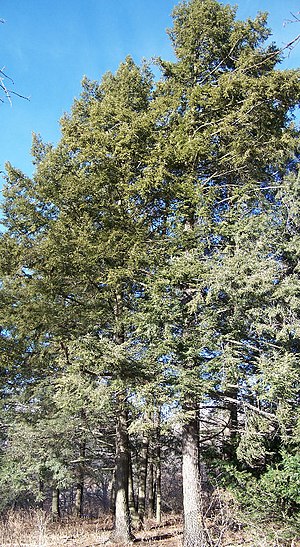Socrates was a pretty smart guy. A philosopher from Ancient Greece, he is credited with advancing theories in Western Philosophies surrounding ethics, logic and epistemology. While his student Plato helped to make his words and thoughts famous after his death, one aspect of his life is well-known. After disagreeing with the State, as his punishment, Socrates was poisoned with hemlock.
Since that time, any reference to hemlock is linked to Socrates’ untimely death, but the fact is that there is more than one kind of hemlock around. While his deadly potion was concocted from Poison Hemlock, Tsuga canadensis is native to London, Ontario and far from poisonous to anyone. Today, CLC Tree Services will introduce you to the Eastern Hemlock tree.
Eastern Hemlock
While you won’t find any Eastern Hemlock trees that were around when Socrates walked the planet, these coniferous trees are an extremely old species. Some trees may live upwards of 600 years and can be found across Ontario, Quebec, New Brunswick, Nova Scotia, and down into the Eastern US. They are not picky about soil type, growing in most anything as long as it is moist or very moist soil, and with good drainage. They are a popular tree due to the fact that they are one of the few evergreens that prefer cool climates, with shade to partial shade to grow in.
CLC Tree Services doesn’t usually suggest many evergreens when asked about what tree to plant, but the Eastern Hemlock is an exception to the rule. They are far more resistant to fungal disease, which is a problem that many other conifers suffer from. They grow to approximately 30 metres tall, with the trunk running up to 100 cm in diameter. They typically have straight trunks with a conical shape. The bark on an Eastern Hemlock is scaly, becoming deeply cracked as it gets older. It has 1-2 cm green needles, with a white line on the underside. The needles are attached to long, skinny, flexible branches that come right off the main trunk.
While the Eastern Hemlock is a heavy propagator of 1-2 cm cones over a long period, the seeds that drop from those cones in late fall and winter have a low germination rate. They need a relatively warm temperature to germinate, unlike the cooler temperatures which are usually found in stands of hemlocks. They are also highly susceptible to drying, which happens in warmer areas, thus making natural germination more difficult.
If natural germination is more difficult, why plant the tree at all, you might wonder? Eastern Hemlocks provide food and shelter for white-tailed deer, wild turkey, snowshoe hares, squirrels, and many other animals. They are used for lumber in general construction, and pulp in the paper manufacturing industry. They also make great specimen trees, due to its good colour, shape, acceptability to pruning, and adaptability to poor locations. With few natural pests that attack it, perhaps you should consider planting an Eastern Hemlock this Fall…
Psst, if you need a hand with your tree planting, contact CLC Tree Services today!






